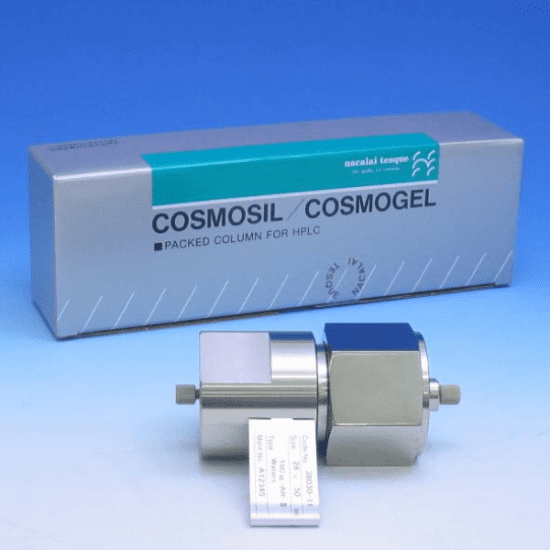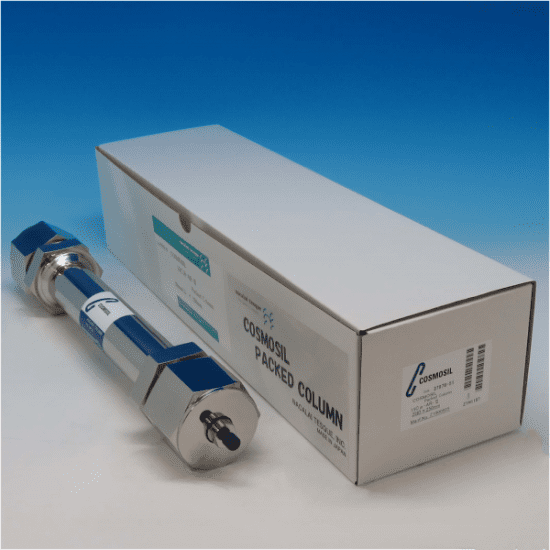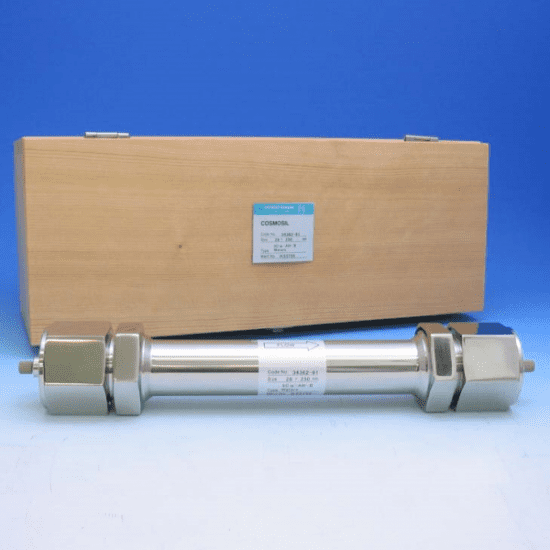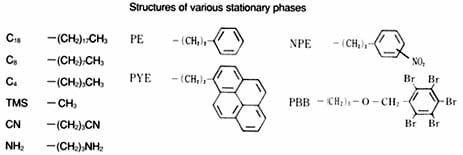


Fullerenes Relates Columns
| COSMOSIL® | Bounded ligand | C(%) | Special features and Applications |
| Buckyprep | pyrenylpropyl group | 17 | Economical preparative separation of fullerenes (higher fullerenes, metal containing fullerenes) on an analytical HPLC system. |
| Buckyprep-D | Nitro-carbazoyl group | – | For separation of fullerene derivatives |
| Buckyprep-M | phenodiazin group | – | Designed to separate metallofullerenes in economical solvent (Toluene). |
| CNT | Hydrophilic group | – | Size-based separation of soluble carbon nanotubes, High durability. |
| 5PBB | pentabromo benzyl group | 8 | Designed for the preparative separation of fullerenes using carbon disulphide or toluene as mobile phase. |
| 5PYE | pyrenyl ethyl group | – | Multiple separation modes including hydrophobic interaction, charge transfer and π – π interaction makes this column very unique. Especially useful for structural isomer separation. |
| 5C18-MS-II | octadecyl group | 16 | Monofunctional silylation on ultra-pure silica gel makes this column suitable for the separation of a wide range of compounds. |
| 5C18-AR-II | octadecyl group | 17 | Multi-purpose, ultra-pure silica gel based polymeric C18 column with exceptionally strong acid resistance. |
| 5C18-PAQ | octadecyl group | 11 | Reversed phase HPLC column, compatible with 100 % water based mobile phases! |
| 5C18-P-MS | octadecyl group | 9 | Generally recommended to improve retention of very polar compounds. |
| Cholester | Cholesteryl group | 20 | Cholester is the best “Second-choice” column for reversed phase chromatography. The rigid-structure of Choresteryl-group solves your problems. |
| 5NPE | nitrophenyl ethyl group | 9 | Similar to the PYE column with multiple separation modes. Very useful for separations impossible with standard alkyl chain columns. |
| C18,C8,C4,Ph AR-300 | alkyl or pheny group | – | Wide pore reversed phase column with high acid resistance recommended for the separation of proteins, polypeptides, nucleic acids and other large molecules. |
| 5Diol-120-II 5Diol-300-II | diol group | 9 | Silica-based gel filtration column for high-speed separation of proteins and enzymes. |
| 5HIC | – | – | Hydrophobic Interaction Chromatography column for protein separation. |
| 5C8-MS | octyl group | 10 | Shorter retention than C18-MS-II but otherwise provides excellent separation for many compounds |
| 5C4-MS | butyl group | 7 | Short alkyl chain length suitable for the separation of more hydrophobic compounds. |
| 5TMS-MS | trimethyl group | 5 | Provides greater retention for aromatic compounds |
| 5PE-MS | phenylethyl group | 10 | Provides greater retention for aromatic compounds |
| 5CN-MS | cyanopropyl group | 7 | Alternative to improve peak shape or shorter retention times |
| 5SL-II | – | – | Normal phase chromatography without ionic additives |
| HILIC | Triazole group | – | A new column for hydrophilic interaction chromatography. Retains highly polar compounds that would not be retained in C18 columns. |
| Sugar-D | – | – | We have succeeded in creating a new, powerful HPLC column that has significantly longer active life and excellent retention of saccharides. |
| 5NH2-MS | aminopropyl group | 4 | Ligand exchange type chiral column for oxy-acid amino acid separation. |
| 5CSP-HPR | – | – | For open column reversed phase chromatography |
| C18-OPN | octadecyl group | – | For medium pressure or open column reversed phase chromatography |
| C18-PREP | octadecyl group | – | For medium pressure or open column normal phase chromatography |
| SL-II-PREP | – | – | For medium pressure or open column normal phase chromatography |
| Silica Gel 60-N | – | – | Neutral pH for the medium pressure chromatography separation of delicate molecules |
To learn more about COSMOSIL please see our Presentation
The Structure of the Columns | |
Ferrule Type | |
 | 1.tube 2.end-fitting 3.nut 4.ferrule 5.plug 6.filter |
Screw-in Type | |
 | 1.tube 2.end-fitting 3.filter 4.plug |
Please contact us to receive a 142 page Cosmosil Catalog
Chromatography Columns
The reversed phase HPLC column is most commonly used column due to the high theoretical plate numbers, excellent separation characteristics, reproducibility, cost performance and ease of use. Columns packed with the octadecyl group bounded type silica gel (C18, ODS) are the most widely used today. While C18 columns are most widely used in reversed phase chromatography, it is important to distinguish between two very different types of bounded C18 phase formats.
A monomeric type C18 format incorporates the bonding of the C18 alkyl chain to a single silica atom on the silica gel backbone. Monomeric type columns such as the COSMOSIL MS series have excellent synthesis reproducibility, very good lot-to-lot reproducibility and short mobile phase equilibration times. On the other hand, the polymeric C18 format incorporates a tri-functional silylation procedure whereby the octadecyl group is bonded to 2 or 3 silica atoms on the silica gel backbone. This increased silylation results in far greater column stability particularly in acidic mobile phase conditions. Stereo recognition capability is also greater than that of the monofunctional silylation type C18 column. The polymeric format is offered in the COSMOSIL AR series columns. Also along with the C18 columns there are three other special designed reversed columns: BuckyPrep, PBB and PYE columns.
Structure of various stationary phase

More resources on Carbon 60 Supplements at SES Research Inc.
